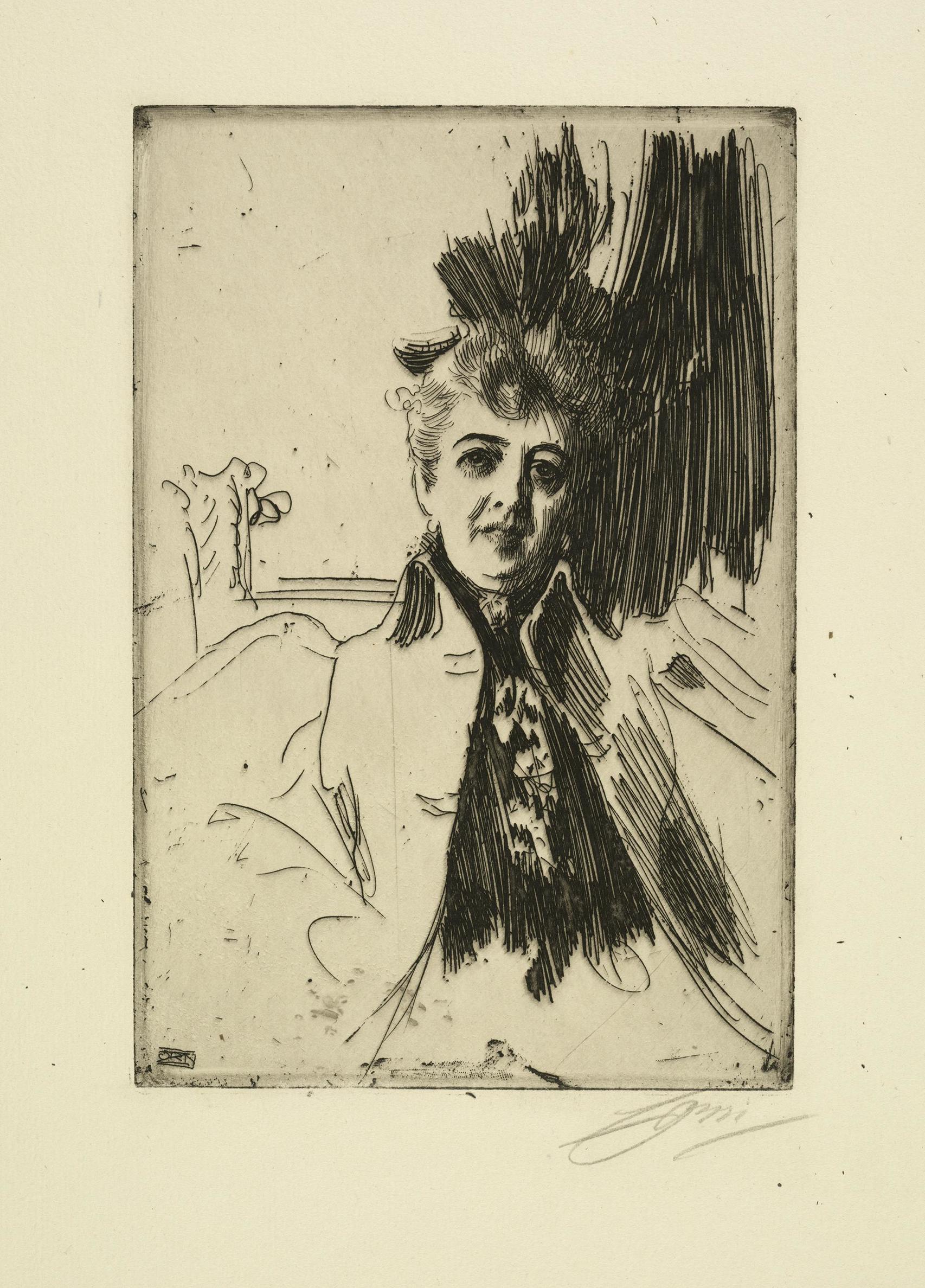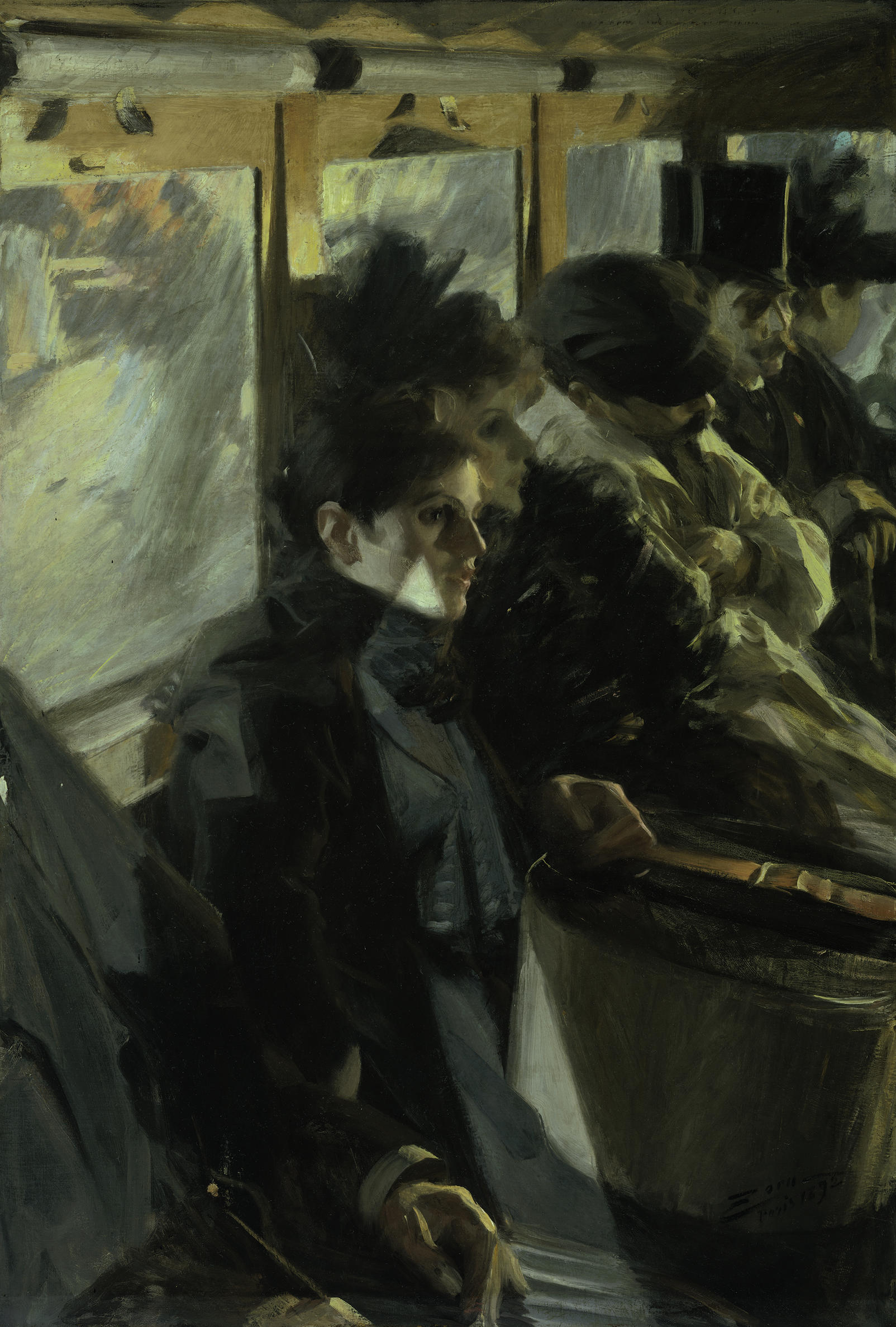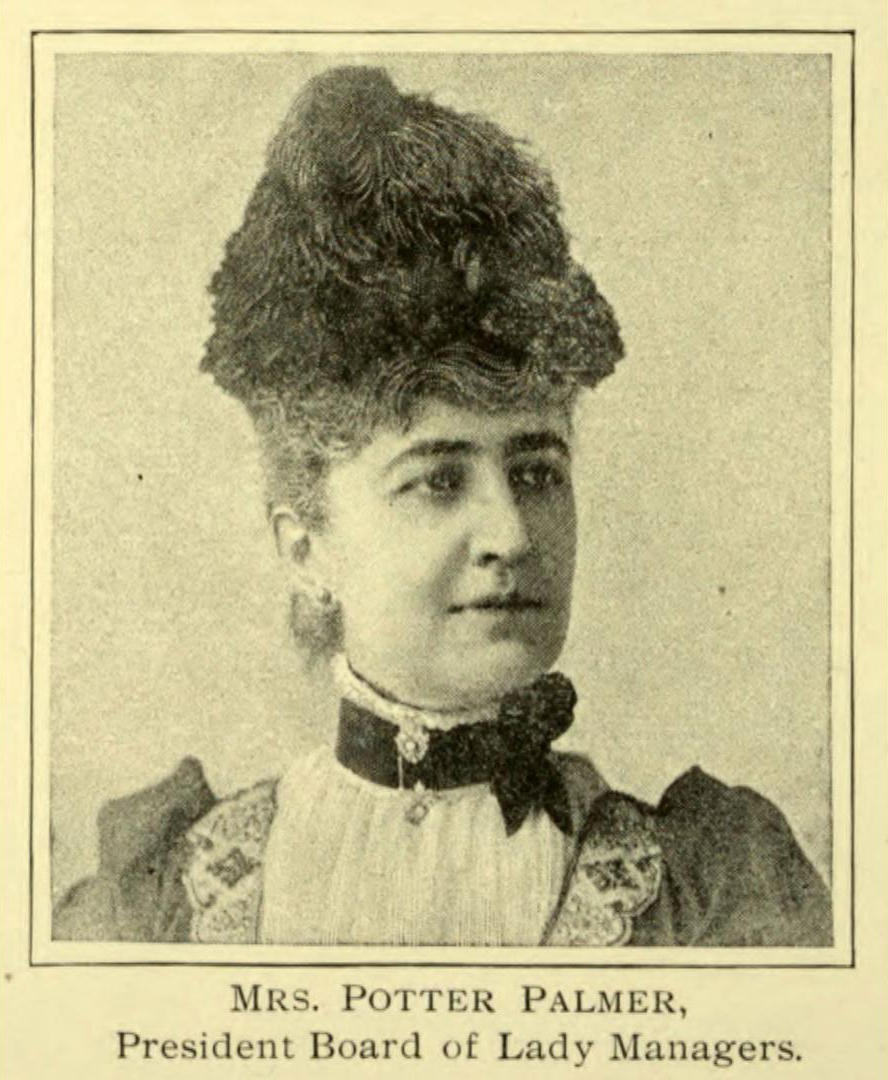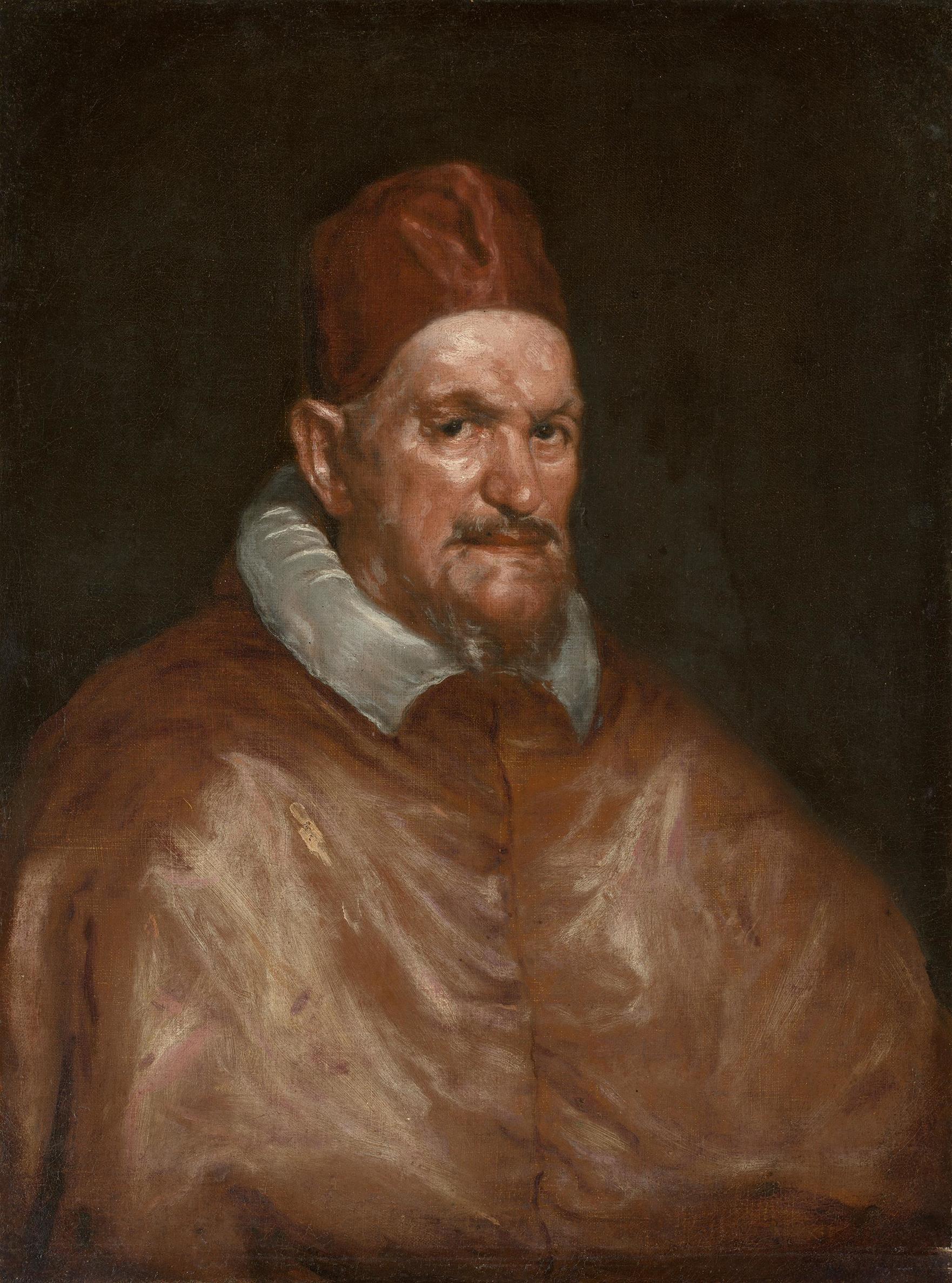Among the many works in the museum by Swedish painter Anders Zorn, one unassuming example stands out. This small, easily overlooked etching depicts Bertha Honoré Palmer, the “Empress of Chicago.” Thanks in part to Palmer, Isabella Stewart Gardner met Zorn in Chicago and became one of his most important American patrons. The two women also hit it off, and this etching remains, perhaps, a symbol of their unexpected friendship.

Anders Zorn (Swedish, 1860–1920), Mrs. Potter Palmer, 1896. Etching
Isabella Stewart Gardner Museum, Boston. See it in the Short Gallery
Gardner’s meeting with Zorn is the stuff of legend. In 1893, he came to America as curator of the Swedish pavilion at the Chicago World’s Colombian Exposition, celebrating the four hundredth anniversary of the arrival of Christopher Columbus in the Americas. Gardner attended a preview with her husband where a chance meeting led her to discover the artist for the first time:
A woman dressed in black came in and looked around in my rooms. She stopped in front of my Omnibus, turned to me, pointed at the painting in questions. ‘I want to have that painting. May I buy it?’ ‘Yes,’ I answered. ‘Who is Zorn?’ ‘I am.’ ‘Oh, you! I feel that either we will soon become enemies or, or forever, very, very good friends. Come to tea with me this afternoon.’
Gardner’s purchase of The Omnibus, today displayed in the Blue Room, was just the beginning. She went on to become Zorn’s most important supporter in America, amassing a collection of five oil paintings, six drawings, and seventy-eight etchings.

Anders Zorn (Swedish, 1860–1920), The Omnibus, 1892. Oil on canvas
Isabella Stewart Gardner Museum, Boston. See it in the Blue Room
Bertha Palmer met Gardner in Chicago. Her husband had made a fortune in the construction of luxury hotels including the Palmer House Hilton. During their travels in Europe, the couple amassed an impressive collection of Impressionist and Post-Impressionist paintings including ninety works by Monet alone. She also used the trips to prepare for the Fair, to which she had been appointed President of the Board of Lady Managers.

Newspaper clipping of Bertha Palmer as the President of the Board of Lady Managers for the Chicago World’s Columbian Exposition
WTTW, Chicago’s PBS station
As a tribute to their leader, the Board of Lady Managers commissioned Zorn to paint a regal portrait, now in the Art Institute of Chicago. In preparation for the sitting, Palmer emptied her bank vault of jewelry and Zorn captures her as a member of Gilded Age American royalty. She appears entirely in white, holding her scepter-like gavel and wearing a tiara, embodying a contemporary description of her as the “the Queen of America, Empress of Chicago.” Indeed the events surrounding the Fair had practically been Palmer’s coronation, and included visits from actual royalty. Palmer and her husband hosted a party in honor of Infanta Eulalia—the youngest child of Queen Isabella II of Spain—that attracted the cream of American and European society who had come to visit the World’s Fair.

Anders Zorn (Swedish, 1860–1920), Mrs. Potter Palmer, 1893. Oil on canvas
Art Institute of Chicago, Potter Palmer Collection (1922.450)
Despite, or perhaps because of, their shared taste for the dramatic, Gardner befriended Palmer. Two years after the Fair, the Gardners hosted a dinner for the Palmers at Fenway Court and occasionally crossed paths with them in Europe, for instance both attending the same dinner party in Rome. They were also occasional rivals. In 1906, Gardner was contemplating the purchase of Pope Innocent X attributed to Velazquez. Berenson wrote to her “Mrs. Potter Palmer only waits for my approval of the pictures to purchase it.” Gardner quickly made up her mind and it is today in the Tapestry Room (now attributed to a follower of Velazquez).

After Diego Velázquez (Spanish, 1599 - 1660), Pope Innocent X, 17th century. Oil on canvas
Isabella Stewart Gardner Museum, Boston. See it in the Tapestry Room
Like Palmer, Gardner was also immortalized by Zorn in a portrait that is today one of the most iconic images of her. The images capture the spirit of two women who shared an unparalleled dedication to their art collections, and who both made sure those collections continue to today serve the public benefit in Boston and Chicago.

Read More on the Blog
The End Justifies the Means

Explore the Collection
Anders Zorn (Swedish, 1860-1920), Isabella Stewart Gardner in Venice, 1894

Read More on the Blog
From Omnibuses to Streetcars: Isabella and the “T”